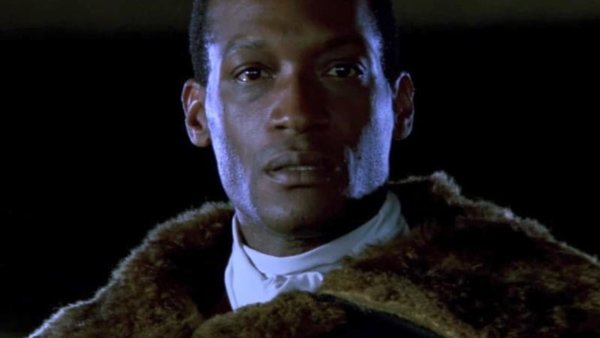10 Things You Didn't Know About Candyman
1. In A Film Called Out For Racism, He Broke Ground For Black Monsters

Candyman inspired serious dialogue about the role of race in horror fiction on its release in 1992. Many critics accused the film of, in the words of Devil in a Blue Dress director Carl Franklin, “play[ing] on white middle-class fears of black people.” In response, Candyman director Bernard Rose took time away from shooting to meet with the NAACP. He characterized their view as liberating, saying “Why shouldn't a black actor be a ghost? Why shouldn't a black actor play Freddy Krueger or Hannibal Lecter? If you're saying that they can't be, it's really perverse.”
The greater discussion to be had is embodied in the Candyman character. Tony Todd’s indelible performance ranks with the greatest in horror history – and for years, it was the only one of its kind. Even the most transgressive horrors shied away from the real nightmares that Candyman embodied: a free black man murdered by a lynch mob for loving a white woman, now set free to wreak well-earned vengeance. You can still count the number of black slashers on one hand, and it took almost 30 years (1992 was 28 years ago, yes, we hate it too) for films like Get Out and Antebellum to pick up Candyman’s ball and run. Before that, Daniel Robitaille stood alone in America’s shadow, sole reckoning for the country’s original sin. Beat that for a monster.